For those unfamiliar, this isn’t the Mount Nemrut of stone headed statue fame in the province of Adıyaman. I’m talking about the caldera-topped Nemrut Volcano hosting multiple crater lakes.
The highest point around the rim of the crater maxes out at 2.948 m, while the lakes sit around 2.200 mt. While there is said to be five lakes within the crater, the two that remain year-round are Lake Nemrut and Lake Ilı. Lake Nemrut is a beautiful shade of blue, so clear that the volcanic obsidian ubiquitous within the crater is visible under the odorless, pure water. Although some underwater hot springs keep the lake from freezing in the winter, the smaller Lake Ilı (Ilıgol, meaning warm lake) is even closer to the volcanic fault. There are boiling hot pools along the sides of this greenish lake where I (and the bears) consequently bathed during my time in the crater.
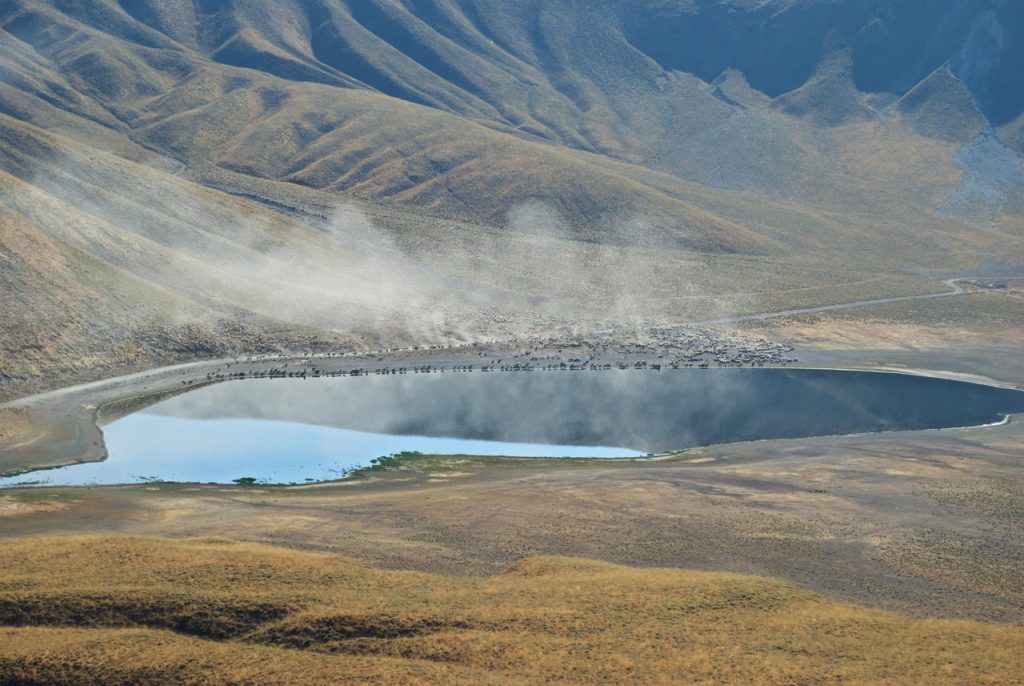
The climate inside Turkey’s youngest volcanic cone is unique to the Armenian Highlands. The high temperature and humidity provided by the protection of the caldera walls allow the growth of deciduous trees, the only place where they grow at high altitudes in the region. With 450 different plant species recorded within the crater, diversity in flora points to a history of changing climates.
The reedy areas present in the northwestern corner of the lake are a favorite stopover for multiple species of migrating birds. After uncontrolled hunting led to a decrease in wildlife, Nemrut was designated a national monument and today mammals such as hares, foxes, and bears roam within the crater. As one of the places most devoid of human settlement that I’ve personally seen in Turkey, the only threat to Nemrut’s ecology is probably overgrazing by the herds of nomadic local shepherds.
This summer, while organizing a section of hiking route from Tatvan to Ahlat, I spend over a week camping out next to Lake Ilı, exploring different possibilities of old roads and trails as well as nearby villages.
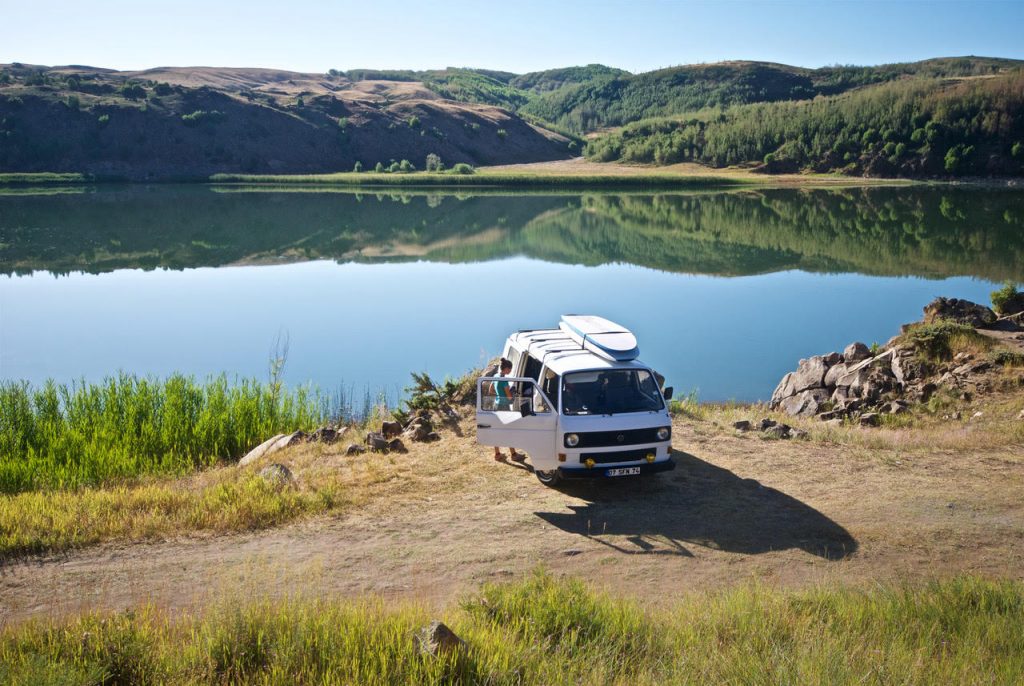
As there are no facilities inside the crater itself, visitors must be prepared to pack in (or drive in) and pack out all supplies they will need. This includes all food, camping supplies, and drinking water. Camping inside the Nemrut Crater may be one of the closest wilderness experiences still possible in Turkey. In a country where you’re never too far from a village, you may be surprised to find yourself all alone in the crater. Well, except for the occasional barbequing family, and Fevzi, the caretaker of the refreshment-serving shack near Lake Ilı. His little hut serves tea, juice, soda, and the odd package of cookies if you’re in a pinch.
The next closest place to buy basic supplies is in the small village of Serinbayır, outside the crater walls on the way to Ahlat. The village is also home to some beautiful Armenian stone houses and a church, as well as the friendliest people around. Be forewarned that not all villagers (especially the children) are quite as welcoming.
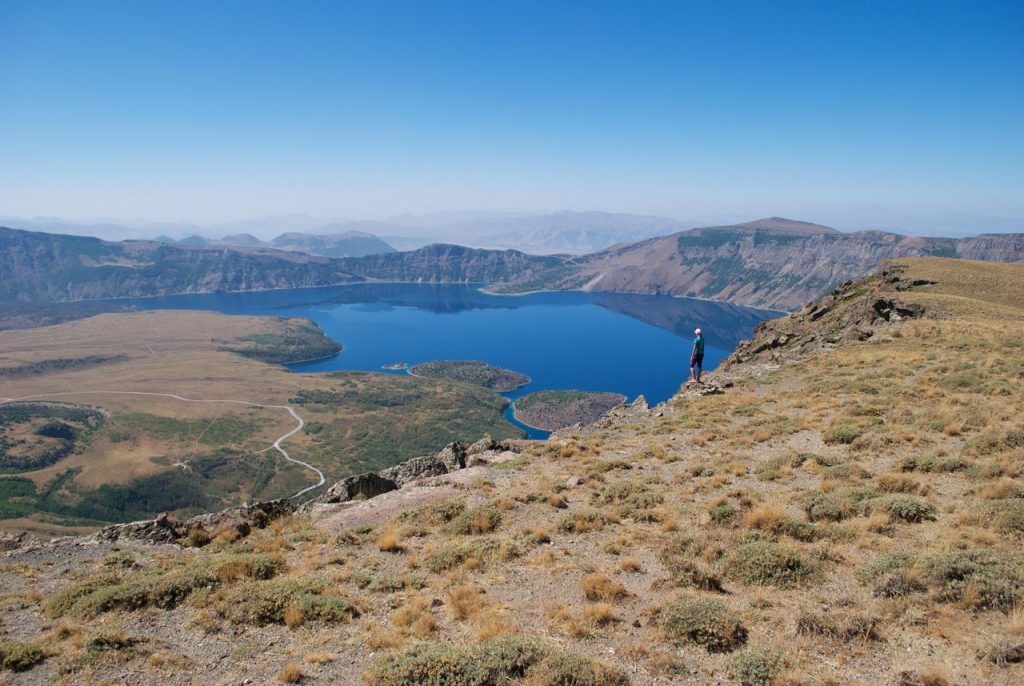
As far as transportation goes, being wilderness and all, there is no public transport to the
crater itself. There are two roads into the crater, one coming from Tatvan, the other from Ahlat. The closest airports are found in Muş and Van, and from there buses run to Ahlat and Tatvan, but actually getting to the crater will require a rental car, a lot of patient
hitchhiking, or a set of high-endurance legs.
Once you’re there, you’re only limited by your desire. The most popular activity is hiking
all the way around the rim of the crater (about 35 km) or up to the peak, but there are countless trails and unused roads that deserve exploring as well. Some less difficult walks take you from up and around the southern side of Lake Nemrut, down on a trail to the less visited northern side, and one great walk from the eastern side of Lake Ilı heading through an area full of squat trees and shiny volcanic boulders which I dubbed as ‘Bear Country’, up to the main Ahlat road. There is a full 90 kilometer hiking route around the crater in the works, so like I said, endless possibilities.
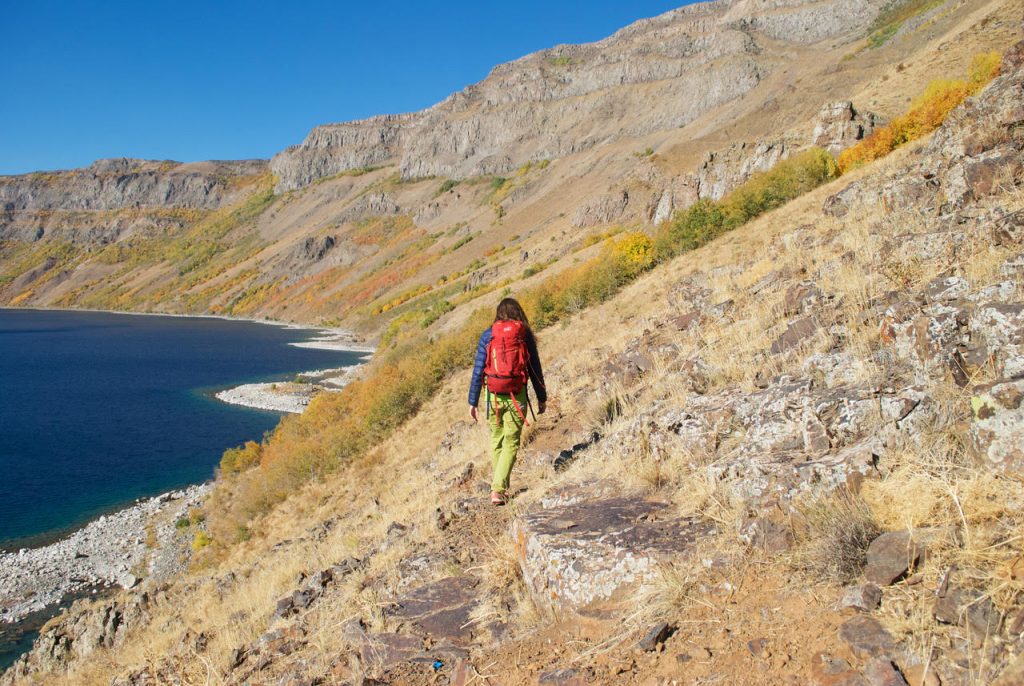
All of the trails and roads also make perfect running routes. In addition, the lake is a great place for a variety of watersports. Paddle boarding is best done early in the morning
before the wind picks up. After that you could explore the rocky islands and coast via kayak, and there is always swimming for those brave enough to test their resistance to the cold. If not, you can just sit in the thermal pools that dot the edge of Lake Ilı. A ski resort was established on the crater as well, although it is currently out of use. Even with a lack of facilities, I can imagine ski touring would be amazing at the crater in winter.
Once you’ve had enough of the outdoor adventure life and want to return to the modern convenience of hot showers and electricity, a few night’s stay in Tatvan or Ahlat will allow you the change to visit the surrounding towns and villages. In addition to Serinbayır, which I previously mentioned, visit nearby Taşharman Village for the best preserved traditional stone architecture in the region.
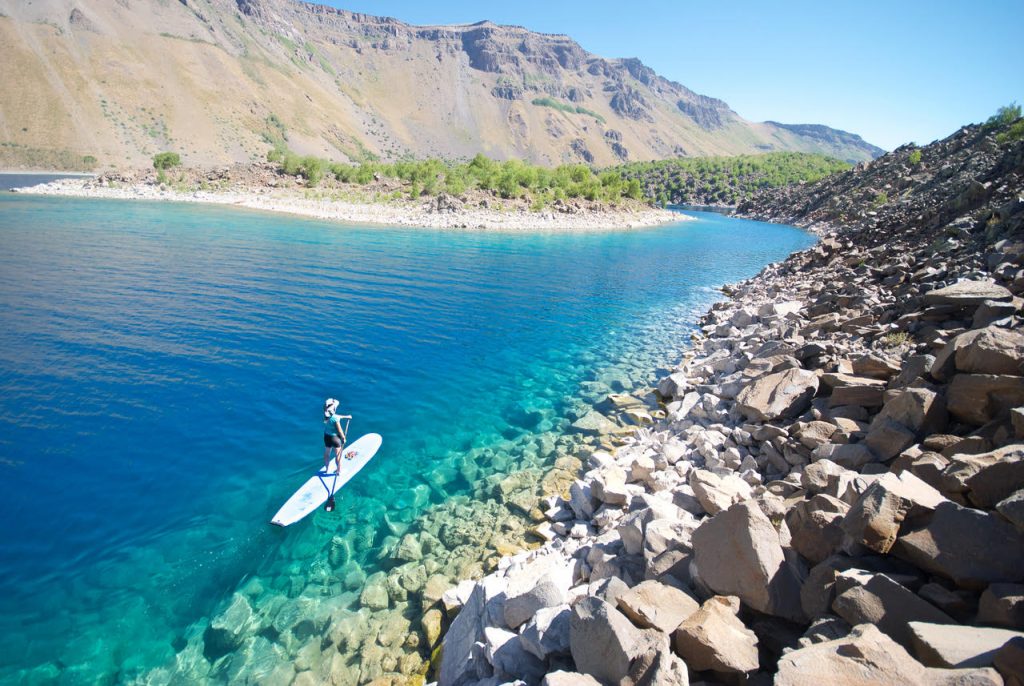
Ahlat is famous for its Seljuk Period Cemetery and vaulted tombs, and the inside of the castle is very nice as well. Then, of course, there is the historic city of Bitlis and the whole coast of Lake Van… but that’s going to have to be another article.
The Nemrut Crater and its surroundings make up a diverse and culturally rich region that deserves many more visitors than it currently gets. If you are looking for a unique landscape and a bit of adventure, I can’t think of a better experience than camping in, hiking in, or just spending time inside a volcano.










a great place
oh girl, you conviced me! just Turkish people there say it’s so dangerous 😉